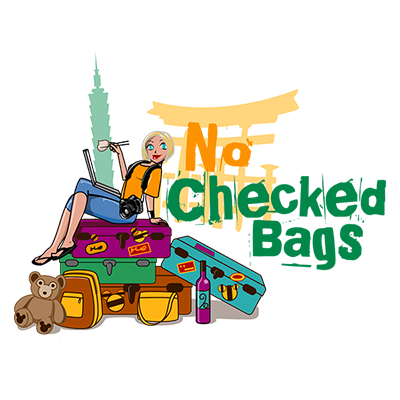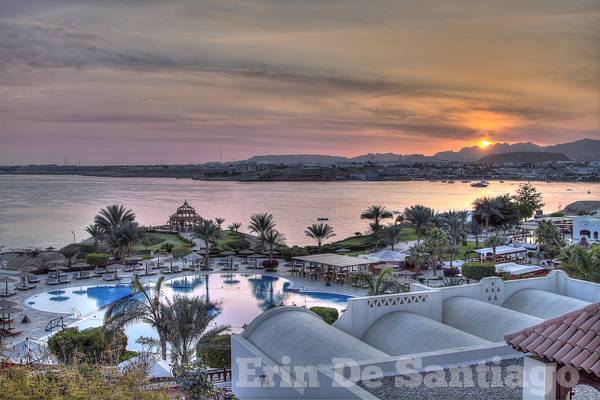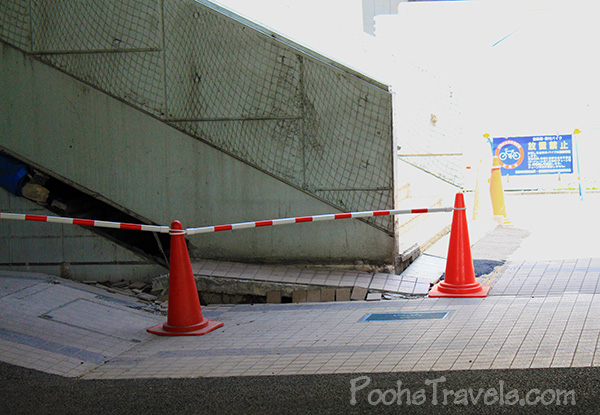
Remembering Japan one year after the Tohoku Earthquake and Tsunami
Hard to believe that a year ago, Japan was forever changed after the devastating 9.0 earthquake and tsunami that literally leveled a portion of the island nation. The subsequent nuclear disaster, the worst the world has seen since Chernobyl, certainly added insult to injury and affected many of us in neighboring regions over radiation concerns from travelers and food supply.
Remembering March 11
I will never forget the afternoon of March 11 as I was supposed to be in Tokyo that day, but decided to stay home in Taipei instead. I was talking to fellow colleagues in Japan when the earthquake struck and watched the series of horrific events unfold live over local Japanese news stations and from local friends who were reporting surreal conditions in Japan.
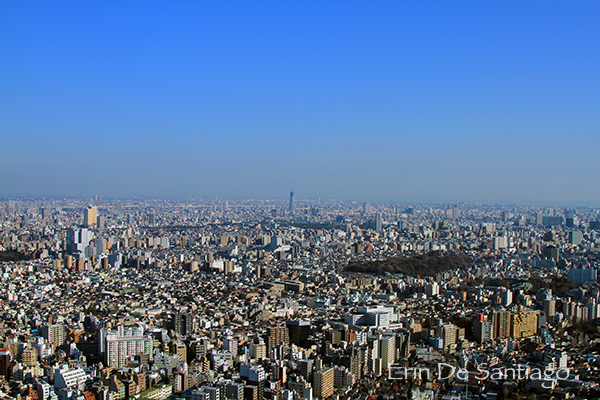
And then, a tsunami warning was issued for us. Taiwan was the first place scheduled to get hit after the monstrous wave departed Japan’s shores and I found myself instantly shifting gears into panic mode.
While we live a couple miles inland (with giant mountains to protect us), Brett was at the beach down south on a company “team building” exercise.
Of all the days.
After multiple frantic phone calls, I was able to reach him and thankfully he had decided to leave a little early in hopes of catching an earlier train back north to Taipei. He was able to get ahold of his boss to warn the rest of the group as well otherwise they would’ve been in the danger zone when the tsunami was scheduled to strike.
Fortunately, nothing happened at the time predicted and it was eerily calm on the coast as the tsunami passed.
I will never forget the group of travel bloggers and Twitter users who banded together that evening to share updates as each warning passed while the tsunami made its way towards Hawaii and the California coastline. Gary Arndt, from Everything Everywhere, was in Hawaii, and was the main person cultivating information from each region and reporting on conditions and preparations where he was.
The Twitter conversations that night were one of the most humbling and heartwarming experiences. It finally hit me how the face of news reporting and how we get our information has changed. During a catastrophe that had such a global impact like this massive earthquake and tsunami, relying on mainstream media reports were not going to be helpful or timely. Many in the western world were just waking up so the international news was focused on replaying the initial set of tragic events.
Japan is a country that I loved years before I ever visited, and it’s a place I feel a deep connection to. I visit Tokyo and some of the surrounding areas 4 to 5 times a year. My heart literally broke watching the news and hearing reports from friends about their firsthand experiences and the loved ones they lost.
My First Trip to Japan after the Earthquake
My first trip back to Japan was not until almost two months after the earthquake. Some people really questioned my decision to go given concerns over radiation and the stability of the country. I actually had people tell me I was crazy for going.
Why?
There was really no better time to visit and show support. Radiation warnings in Tokyo were lifted and parts of Japan were trying to find some sense of normalcy. The Tokyo Disney Resort had just reopened and since I write about Disney Theme Parks, it was the perfect time to show support and report back on the conditions in and around the resort.
Flying into Narita and traveling to the Tokyo Disney Resort area, which ironically is not in Tokyo proper, I only noticed traffic was lighter and people overall were more subdued. No overt signs or damage to indicate the disaster should keep tourists away.
My first few days at the Disney Resort were immediate indicators that something major had happened. A first time visitor to Tokyo Disney would be unlikely to pick up on the nuances whereas someone who goes regularly could spot things right away.
The biggest red flag was a lack of people at the parks. Tokyo Disney is renowned for its epic-length lines, and on a normal day, people would be queuing up sometimes two hours for attractions. But that day, the longest line was 15 minutes. Rather than staking out a prime viewing spot 1 1/2 hours before the parade, you could get “second row” seating on the curb 10 minutes before.
The merchandise was different, too. In speaking with several different Cast Members, I learned that some of the factories that produced products for the Tokyo Disney Resort were damaged or destroyed, causing an obvious absence in seasonal displays and merchandise that would normally be available.
While riding the monorail around into the resort, the parking lot that was under water after the earthquake due to liquefaction was still receiving its final touch up and repairs, closed to the usual stream of cars lining its aisles.
The biggest shock though came after walking to the Maihama Train Station, the JR Train that brings most Tokyo locals to the Disney Resort. The physical damage from the earthquake was worse than I expected being so far out from the epicenter. There were huge holes and uneven sidewalks, stairs cordoned off as they continued to crumble, and yet, I felt like I was the only one who noticed.
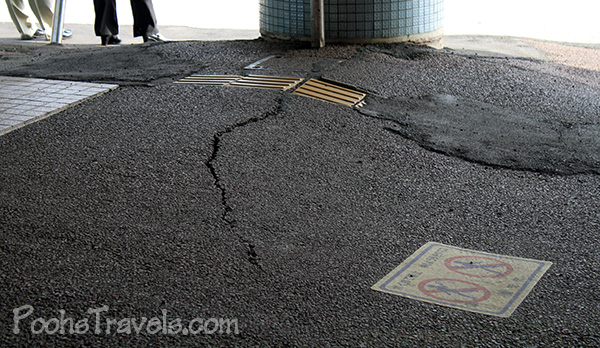
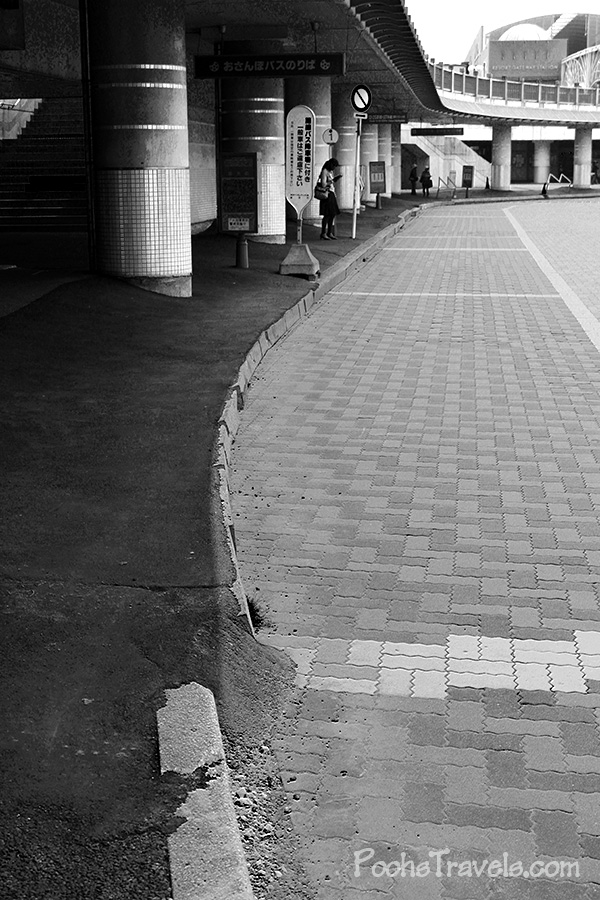

People walked by as though nothing was different. Perhaps that was a coping mechanism or they had seen it so many times before it was just accepted.
The next morning I was woken up by a fairly strong aftershock and for the first time in a few years, I had a moment of panic. We get strong earthquakes in Taiwan, much like Japan does, which are typically no big deal.
This scared me.
We checked and everything was ok, Tokyo Disneyland was opening, and we made our way to the train station as we were spending a night in Tokyo’s Ginza district before heading home to Taiwan.
Ginza is the financial region in Tokyo and is where you find a number of the fancy financial buildings, some high end shopping, and lots of activity. Typically.
What we found was a very quiet area with a small parade going down the street with Pray for Japan banners and Red Cross personnel seeking donations.
And the next morning, another strong aftershock sent me flying out of bed. And while that had me on edge yet again, what I saw when we left the hotel is an image that has continued to haunt me since that day.
A homeless man made his home on the street corner in Ginza. I wasn’t taken aback because it was the first homeless person I had ever seen in Japan, but it was the apparent circumstances. It was pretty evident this man was a victim of the earthquake. He was dressed in clean, neat clothes and had a ton of belongings — probably everything he could salvage after the disaster.
He had everything bundled together and sat in a chair under several umbrellas, hoping to be an invisible fixture on that street corner.
I passed him several times over the next day, and my heart went out to him, wondering what tragic tale he suffered during the earthquake and tsunami.
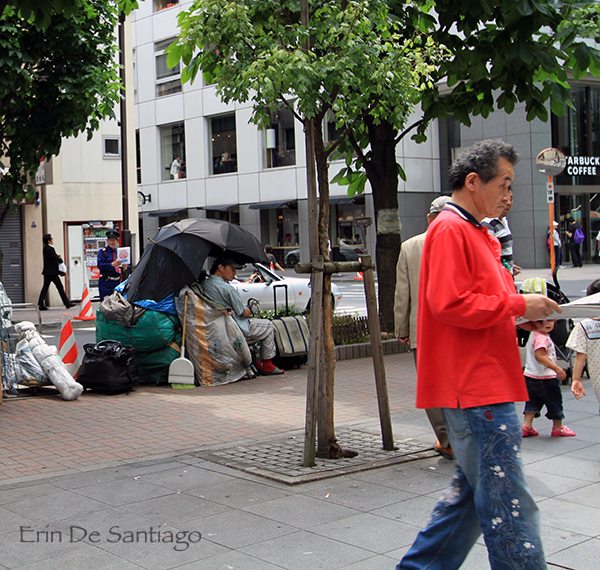
Japan a Year Later
Today, I am still getting emails and comments on other sites I write for about whether it is safe to return to Japan yet.
A resounding yes! If you’ve thought about planning a trip to Japan, I can’t emphasize enough that now is the time to do it. The country could use every tourist dollar it can get, especially as the traditional high season approaches — cherry blossom season is just weeks away!
Sadly, I have only made three trips back to Japan since March 11, and I haven’t been since mid November as I’ve been traveling outside of Asia the last two months. I am working on heading back to Tokyo and hopefully Kyoto in a couple weeks –to celebrate my birthday, get my Disney fix, and finally see the cherry blossoms in person — all while supporting a country that I love dearly.
